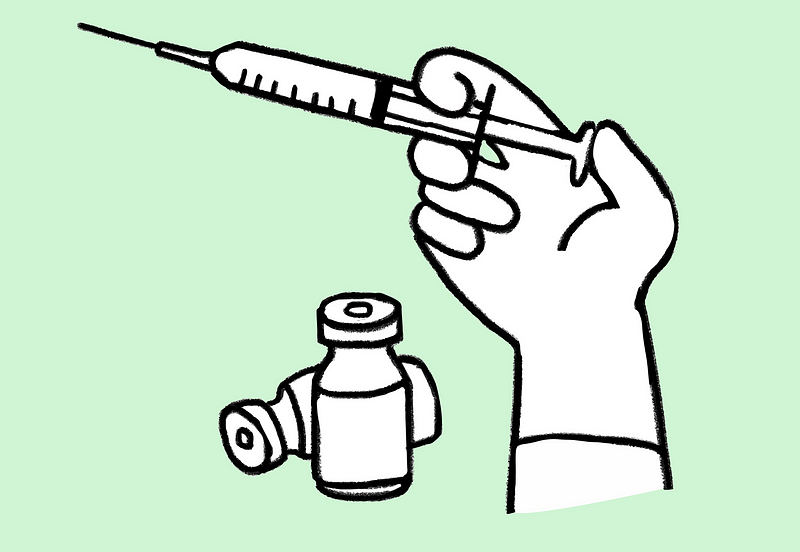# Understanding Monkeypox Vaccination and Prevention Strategies
Written on
Introduction to Monkeypox
Since its emergence on May 7, monkeypox has garnered global attention, with over 1,600 confirmed cases across 35 countries. The Centers for Disease Control and Prevention (CDC) has expressed heightened concern regarding this outbreak. While the World Health Organization (WHO) acknowledges the potential for monkeypox to establish itself outside Africa, experts are optimistic that it will not escalate into a widespread pandemic. One of the reasons for this optimism is the virus's limited transmission capabilities. Additionally, there are effective vaccines available that can be administered even after exposure to the virus.
Understanding Monkeypox Virus
Monkeypox virus (MPXV) belongs to the Orthopoxvirus genus, which includes other viruses that cause skin diseases, such as the variola virus (smallpox) and the vaccinia virus (cowpox). The infection progresses through three distinct phases:
- Incubation Period: After infection, the virus replicates at the entry site, such as the respiratory tract or any broken skin, and disseminates through the lymphatic system. This period can last from 6 to 14 days, occasionally extending to 21 days.
- Invasion Period: Symptoms manifest as fever, severe headache, swollen lymph nodes, back pain, muscle aches, and fatigue.
- Rash Development: Following fever onset, a rash typically appears 1-3 days later, primarily affecting the face, palms, legs, mouth, and sometimes the genital area. The rash evolves through several stages: macules, papules, vesicles, pustules, and finally crusts that fall off, usually within 2 to 4 weeks, signaling the end of infectiousness.

The Efficacy of Smallpox Vaccines Against Monkeypox
During the early monkeypox outbreak in Zaire from 1980 to 1986, studies revealed that among 338 infected individuals, only 43 (12.7%) had been vaccinated against smallpox. Those vaccinated exhibited milder skin manifestations, resulting in an estimated efficacy of at least 85% for the smallpox vaccine in preventing monkeypox. This estimate was derived from first-generation vaccines.
Currently, there are three generations of smallpox vaccines available:
- First-Generation: Utilizes live vaccinia viruses and is not recommended for general use due to safety concerns.
- Second-Generation: Similar to the first, but produced using controlled cell cultures, improving safety.
- Third-Generation: Employs attenuated vaccinia viruses that are safer for administration.
Presently, two vaccines are approved for monkeypox: ACAM2000 and Jynneos (also referred to as 'Imvanex' in Europe and 'Imvamune' in Canada).
ACAM2000
ACAM2000, a second-generation vaccine, is administered via multiple skin punctures (15 in total). However, it contains live vaccinia virus, which can pose transmission risks for up to 21 days post-vaccination, particularly to vulnerable populations such as pregnant women and immunocompromised individuals.
Jynneos/Imvanex/Imvamune
Jynneos is a third-generation vaccine that uses a modified vaccinia virus strain that does not replicate in humans. It is administered as a two-dose series, four weeks apart, making it a safer alternative for those who cannot receive ACAM2000.
Vaccination Recommendations
Vaccination with smallpox vaccines is generally reserved for occupational exposures to orthopoxviruses, such as monkeypox. The U.S., U.K., and Canada have adopted a "ring vaccination" strategy, recommending post-exposure vaccination for individuals who are infected or have been in close contact with an infected person.
- Vaccination is recommended ideally within 4 days of exposure, though it can be administered up to 14 days later.
- Two doses of Jynneos are advised for individuals without prior smallpox vaccination history.
- A single dose is sufficient for those with a previous live smallpox vaccine or specific Jynneos vaccination history.
- No additional doses are necessary for individuals with recent vaccinations.
Conclusion: Best Practices for Prevention
Unless you have been in contact with an orthopoxvirus or someone infected, seeking the smallpox vaccine is generally unnecessary. The effectiveness of the vaccine against monkeypox in humans remains under scrutiny, and even the safer Jynneos vaccine carries potential side effects. Therefore, the WHO is cautious about implementing widespread vaccination. The most effective way to prevent monkeypox remains consistent with guidelines for COVID-19: practicing good hygiene, maintaining safe distances, and wearing masks when necessary.
Special thanks to Shawn Seah for inspiring this article on monkeypox. If you enjoyed this content, consider subscribing to my Medium email list or accessing Medium through my referral link for unlimited articles.